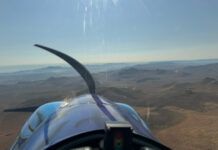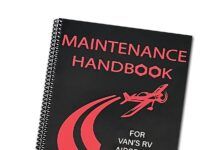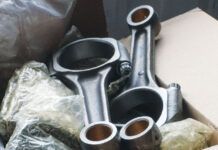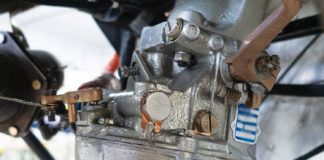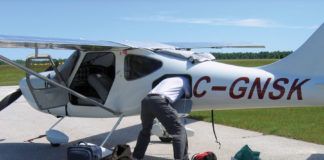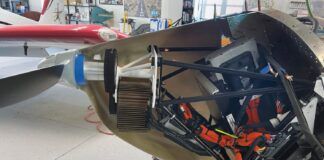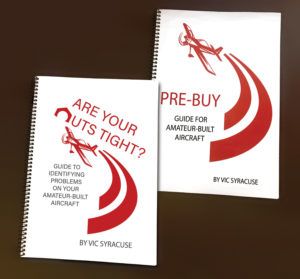 As the old adage goes, “You don’t know what you don’t know.” No doubt that’s true when conducting a pre-buy or condition inspection on an Experimental/Amateur-Built aircraft. But there is a way to quickly accelerate the learning curve. In two new books, Pre-Buy Guide for Amateur-Built Aircraft and Are Your Nuts Tight? Guide to Identifying Problems on Your Amateur-Built Aircraft, homebuilt aircraft guru Vic Syracuse shares what he’s learned from performing over 1000 condition inspections and several hundred pre-buys on E/A-B aircraft.
As the old adage goes, “You don’t know what you don’t know.” No doubt that’s true when conducting a pre-buy or condition inspection on an Experimental/Amateur-Built aircraft. But there is a way to quickly accelerate the learning curve. In two new books, Pre-Buy Guide for Amateur-Built Aircraft and Are Your Nuts Tight? Guide to Identifying Problems on Your Amateur-Built Aircraft, homebuilt aircraft guru Vic Syracuse shares what he’s learned from performing over 1000 condition inspections and several hundred pre-buys on E/A-B aircraft.
Longtime KITPLANES® readers will certainly be familiar with the dozens of columns Vic has written over the years. He’s also built 11 aircraft, is a licensed A&P mechanic with inspection authorization and is a designated airworthiness representative (DAR) who has licensed hundreds of amateur-built aircraft over the past 12 years.
Besides being a member of the EAA Board of Directors, Vic serves on the EAA Homebuilt Aircraft Council and is an EAA technical counselor and flight advisor. In 2013 he started his own business, BaseLeg Aviation in Peachtree City, Georgia, where he and his son Nick perform maintenance and pre-buy inspections.
Needless to say, Vic is a pretty busy guy. Traveling via the airlines or his own RV-10, he’s performed inspections in 30 states throughout the USA. But when COVID-19 prevented him from flying commercially, and he had to tell many customers that he was unable to help them with their pre-buys, he decided to spend the downtime writing these books.
A Guide for Used Aircraft Buyers
If you’re thinking about buying a used homebuilt, you’ll definitely want to invest in a pre-buy inspection. No matter how nice a plane looks, you won’t know if that fancy paint job is hiding damage or poor workmanship until you take a look at the inside.
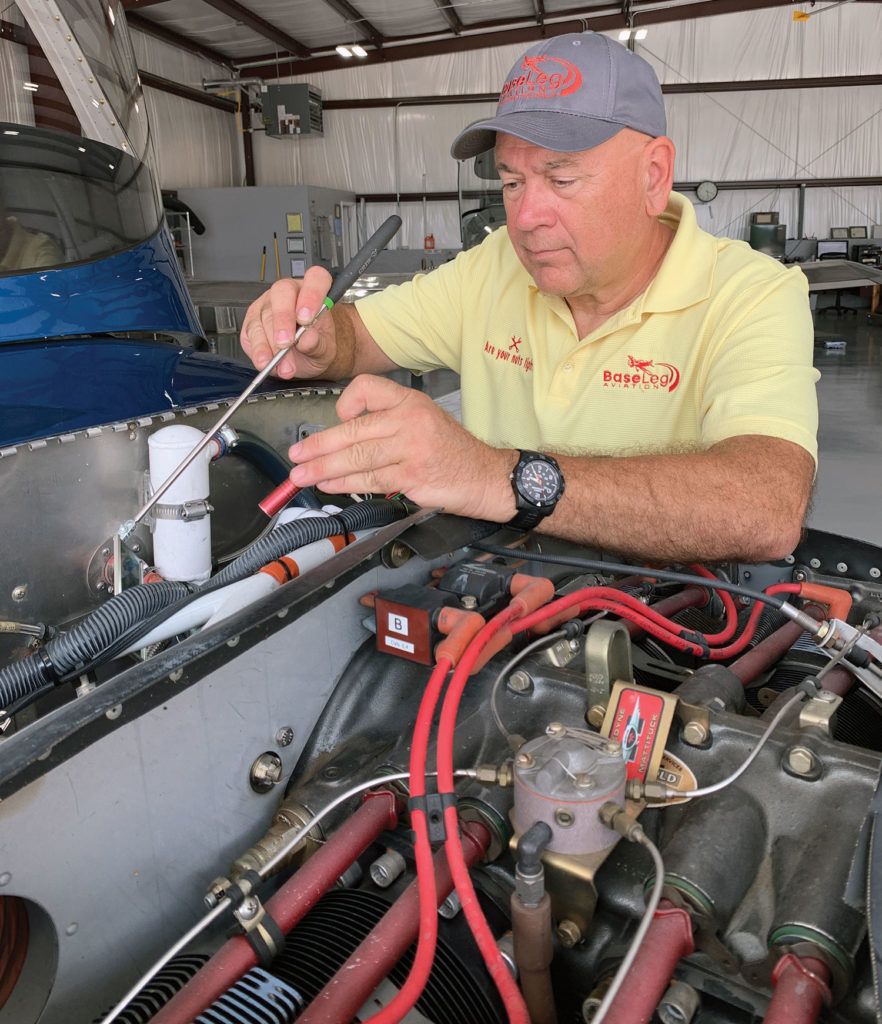
As the name implies, Pre-Buy Guide for Amateur-Built Aircraft covers virtually every aspect of pre-buy inspections. But it also serves as a reference for buying a used homebuilt.
It begins with tips on how to identify the best aircraft for you. It looks at the pros and cons of various types of planes and even includes a short worksheet called an “aircraft wish list” that will help you separate your needs from your wants. For example, do you really need four seats, a full IFR panel and a cruise speed approaching 200 knots if you almost always fly solo, only use your plane on bright, sunny days, and your typical mission is to visit an airport with a halfway decent café within a 50-mile radius of your home base?
Next up is a discussion of things that can influence an aircraft’s price. Installed equipment and engine and airframe total time are obvious considerations, but there are plenty of other things to take into account: Who’s been doing the maintenance? Have they complied with all service bulletins and airworthiness directives? Is there any damage history? Have modifications been made to the original design? If so, will these “improvements” increase the aircraft’s value or are they more likely to have an adverse effect on its flight characteristics?
Once you’ve found an aircraft that’s a serious contender, there are numerous pre-inspection activities you’ll want to do before traveling a great distance to view the plane. Have you reviewed copies of the logbooks? If so, do you understand what you’re looking for as you read them? Is the aircraft free of liens and encumbrances? Has a purchase price been set? Is the airplane in airworthy condition? Who pays to correct problems discovered during the pre-buy? What paperwork must be filed with the FAA to complete the sale? Have you contacted your insurance company if you want to fly the plane home after you’ve finalized the purchase?
With all this completed, it’s time to move on to the actual pre-buy inspection. But where do you start?
Use the Checklist
Included in the book is the same 139-point checklist that Vic uses when he conducts a pre-buy inspection. At first glance, the checklist may seem a bit overwhelming, so Vic has divided the examination into eight key areas, which happen to coincide with eight of the chapters in the book:
- Engine
- Ignition systems
- Fuel systems
- Intake systems
- Engine ancillary systems
- Exterior airframe
- Interior airframe
- Jam nuts
Your job is to work your way through the checklist while studying the examples in the book. The text is clearly written and very easy to follow, plus there are over 280 full-color photos. You’ll know exactly what to look for no matter what type of E/A-B aircraft you’re inspecting.
What are the odds you’ll find problems that need to be corrected? Extremely likely. According to Vic, every airplane that comes through his shop for an inspection has at least three or more items found in the book.
Pre-Buy Guide for Amateur-Built Aircraft has 109 pages divided into 13 chapters. It’s printed on high-quality satin paper and has a spiral binding that will keep the book open to the page you need while conducting an inspection. The book is sturdy enough that it should last for years in a shop environment. It’s also available in PDF format for those who prefer an electronic version. The price for either one is $125.50.
As Vic likes to say, “Basically, it’s like having me in a bottle. Using this book, you should be able to get the same quality pre-buy inspection whether I’m there or not.”
What About Condition Inspections?
Almost immediately after it went on sale, homebuilt aircraft owners who weren’t interested in pre-buys began asking Vic if Pre-Buy Guide for Amateur-Built Aircraft would be useful for yearly condition inspections. The answer, of course, is yes, so Vic released a second book, Are Your Nuts Tight? Guide to Identifying Problems on Your Amateur-Built Aircraft.
This book is a concise maintenance inspection guide. In a nutshell, it eliminates information in Pre-Buy Guide for Amateur-Built Aircraft that will primarily be of interest to buyers of used amateur-built aircraft and retains the eight core chapters that focus on an actual inspection. It will be especially useful to builders and owners who want to build confidence when inspecting a flying airplane. It is also a resource worth sharing with your mechanic if you are not the one who will be performing condition inspections on your homebuilt plane.
Does Are Your Nuts Tight? cover every aspect of condition inspections? According to Vic, the answer is no. This book was derived from Pre-Buy Guide for Amateur-Built Aircraft, but keep in mind that pre-buy inspections are not as comprehensive as condition inspections.
Pre-buy inspections also do not include making necessary repairs, which, of course, are required during a condition inspection. You’ll need some additional knowledge that isn’t found in Are Your Nuts Tight? to complete tasks like packing wheel bearings, timing magnetos and cleaning spark plugs, which are typically performed during a condition inspection. Nevertheless, the book is still a valuable resource that will help you with about 90% of the work required to perform a thorough condition inspection. You can also use it while performing maintenance in between condition inspections. Vic suggests that “Every time you open up your airplane, you should also open the book to the same section. If you don’t find something, you’re probably not looking close enough.”
Are Your Nuts Tight? has 85 pages divided into eight chapters. It’s spiral bound, printed on high-quality satin paper and sells for $69.95. It is also available in PDF format for $59.95.
Worth It?
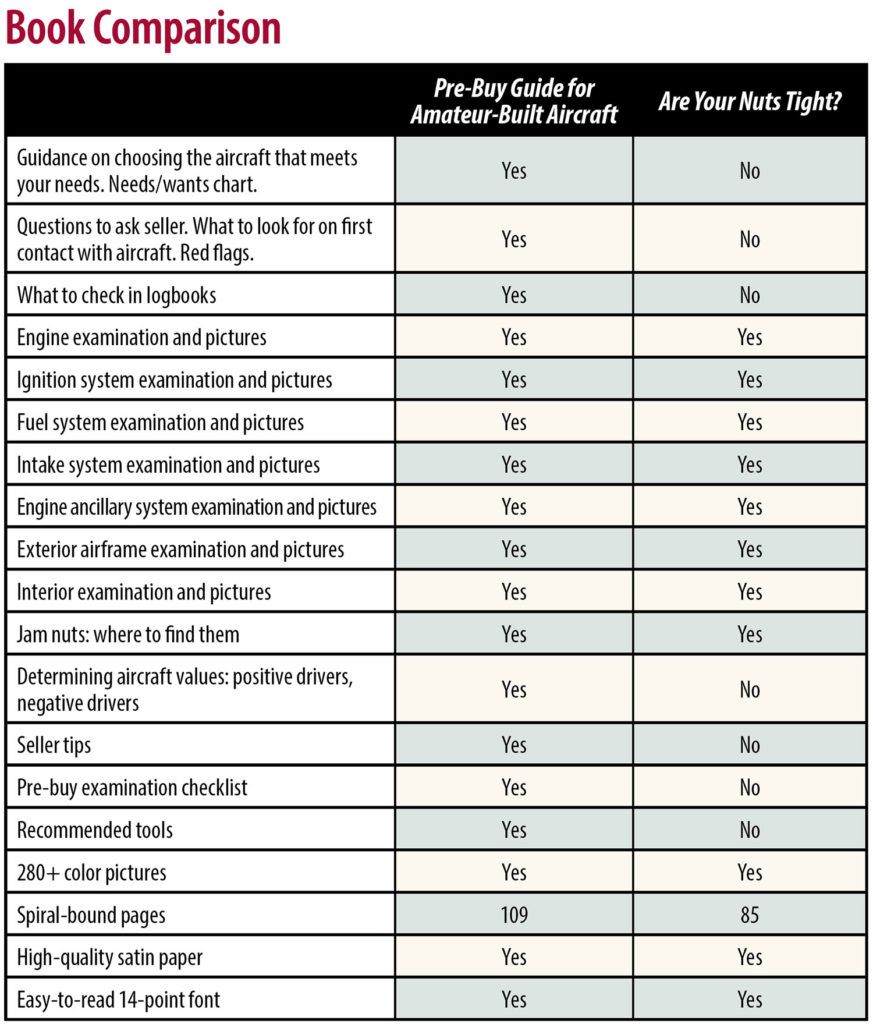
We sure think so. You can’t know too much about an aircraft you’re considering buying—and with few exceptions, a comprehensive pre-buy inspection is the best way to get the information you need to make an informed decision before writing that big check for a plane.
These days, even relatively inexpensive amateur-built aircraft are likely to cost tens of thousands of dollars. If Pre-Buy Guide for Amateur-Built Aircraft helps you uncover only a single flaw during a pre-buy inspection, chances are good it will cost a lot more than the price of the book to have it fixed. You could easily negotiate the amount of the repair bill from the selling price of the plane, thus allowing you to buy the book and still come out money ahead. And you’ll have a great resource for inspecting your plane, should you decide to do your own maintenance in the future.
Even more important, the inspection procedures in the book are a great reality check. They just might save you from buying an aircraft you’re emotionally attached to, but could prove to be a very expensive mistake.
We’re equally impressed with Are Your Nuts Tight? For a whole lot less than the price of a hundred-dollar hamburger, you’re getting a guide that will tell you exactly what to look for when inspecting your own plane. Even if you’ve been wrenching on homebuilts for years, you’re likely to learn something. And if you’re new to amateur-built aircraft, this book is the next best thing to having an experienced A&P looking over your shoulder when you perform an inspection.
As was said up front, “You don’t know what you don’t know.” What you’re really buying here isn’t just a book—it’s access to the vast wealth of knowledge Vic has acquired after 40 years of inspecting amateur-built aircraft. That’s priceless.
To order and for more information, visit baselegaviation.com/store.




